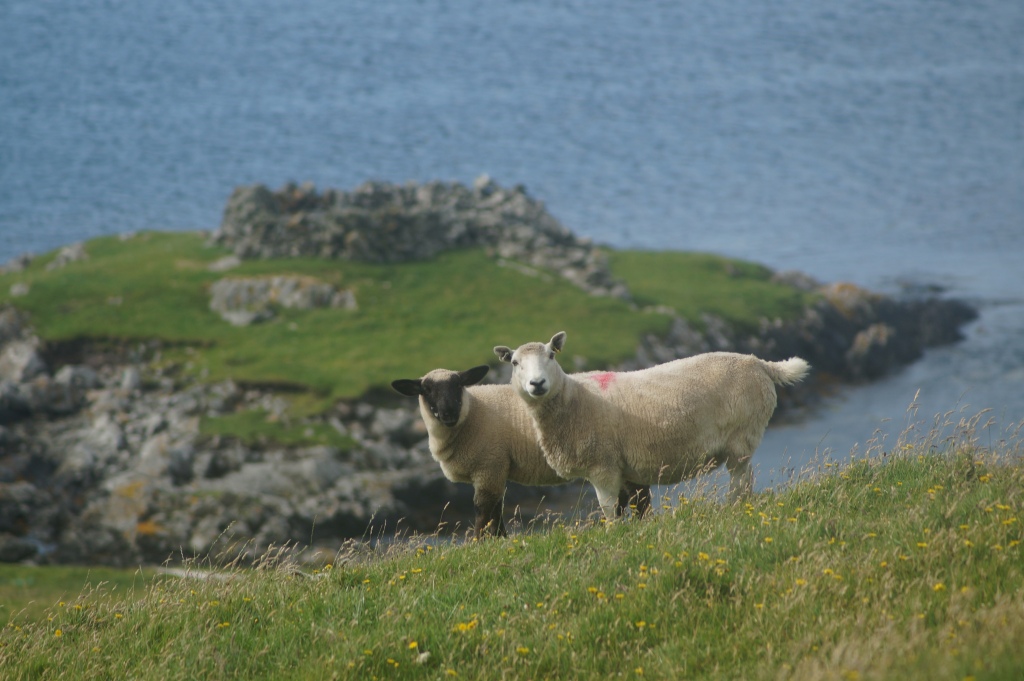The global drop in wool prices in the early-to-mid 1950s, the introduction of man-made fibres meant Shetland wool producers were hit extremely hard, as were producer’s worldwide. Prior to this Shetland wool commanded a very high price due to the demand for its specialist high end wool qualities. I recall an elderly farmer in the 1970s telling me in no uncertain terms how displeased he was with the wool cheque I had just given him on the sale of his wool. He said he could remember when he could employ two full time farm workers for a year, “…and now look at the price you are paying, it is hardly worth shearing.” Another farmer said not so long ago, “I could buy a tractor with my wool clip, what you have paid me today can hardly pay for the fuel in filling up my tractor.” I had no reply on either occasion.
Where wool had been the cash crop once upon a time, a solution had to be found. The price for the small Shetland lamb was unable to bridge the gap, although it was much better than the producer receives today. In order to help matters crofters and farmers came up with a Shetland cross bred sheep. This was the Shetland Cheviot, an island breed which meets modern needs.

A Shetland Cheviot is bred in Shetland from a Shetland ewe and a North Country Cheviot ram. The Shetland Cheviot inherits the prolificacy, hardiness, easy lambing, milkiness and mothering ability of the Shetland breed, with the superior carcass conformation and growth of the North Country Cheviot.

The Shetland Islands are renowned for their natural and healthy environment. Bred in this environment, in which there is no evidence of sheep disease being detected, the Shetland Cheviot has a high health status maintained by the participation of many flocks in the Highlands and Islands Sheep Health scheme.


The Shetland Cheviot is adaptable to a wide range of management systems and stocking densities. The small mature size of the Shetland Cheviot makes good physical and economic sense with high stocking rates achievable. Individual ewe performance is also good and record flocks, when crossed with the Suffolk, ram are producing top performance.

Of course these animals are not as hardy as the Shetland breed and require land which has been improved in order to produce a richer greener pasture and provide adequate grazing for the cross bred sheep which would not thrive on native pastures of peat moor and heather clad hills. They require more attention in animal husbandry such as winter fodder and at lambing time. The wool is of good quality but cannot compare with the superb characteristics of the Shetland breed with ultra- fine fibre and distinct handle.


Very interesting! Quite the history.
Thank you !
LikeLike